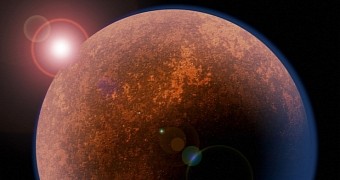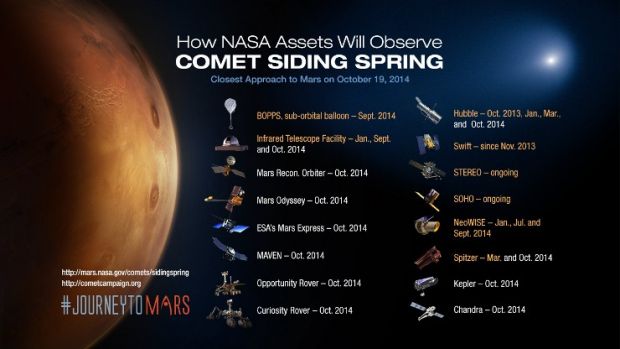These days, NASA scientists have their hands full getting ready to properly study a very rare cosmic event that will happen just a few days from now, on October 19. Thus, on said date, a comet is expected to give Mars one really close shave.
The comet, dubbed Siding Spring but also referred to as Comet C/2013 A1, is expected to get as close as 87,000 miles (roughly 139,500 kilometers) from the Red Planet.
This might sound like a heck of a long-distance rendezvous to us mere mortals, but as far as astronomers are concerned, it's the space equivalent of going to your upstairs neighbor to borrow a cup of milk.
Not to beat about the bush, NASA astronomers say that the 87,000 miles are less than half the distance between our planet and its satellite, the Moon, and less than one-tenth the distance of any documented comet flyby of Earth.
“On October 19, we're going to observe an event that happens maybe once every million years. We're getting ready for a spectacular set of observations,” Jim Green, director of NASA's planetary science division, said during a news conference held this past October 9.
The details of this very rare encounter
NASA astronomers say that, according to their calculations, the comet's nucleus will get closest to the Red Planet at around 2:27 p.m. EDT. At that time, Siding Spring will be traveling at a speed of about 126,000 miles per hour (202,777 kilometers per hour).
The comet is understood to be traveling towards Mars from a spherical space region known as the Oort Cloud. This space region surrounds our Sun and occupies an area spanning between 5,000 and 100,000 astronomical units.
Scientists reassure that the chances that this comet might hit spacecraft currently orbiting Mars are slim to none. The only risk is that the spacecraft will collide with material that the comet constantly coughs out while traveling through space. The good news is that the window of opportunity for such an incident to occur is one of just 20 minutes.
Studying comet Siding Spring
NASA scientists hope that this October 19 encounter will give them the opportunity to study both comet Siding Spring in further detail and its influence on the makeup and behavior of the Martian atmosphere. The tools that will serve to document this cosmic event are detailed in the graphic below.
It is expected that, by studying this comet, researchers will also gain a better understanding of how the Solar System came into being. This is because the Oort Cloud that sent Siding Spring Mars' way is believed to comprise material that was left behind when the Solar System formed.
“This is a cosmic science gift that could potentially keep on giving, and the agency’s diverse science missions will be in full receive mode,” said NASA astronaut John Grunsfeld. “This particular comet has never before entered the inner solar system, so it will provide a fresh source of clues to our solar system's earliest days,” he added.

 14 DAY TRIAL //
14 DAY TRIAL // 

